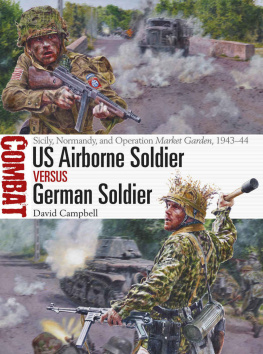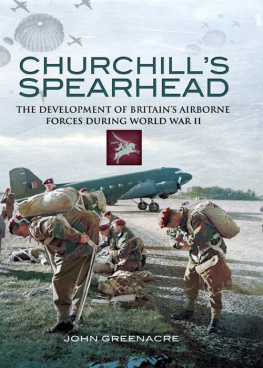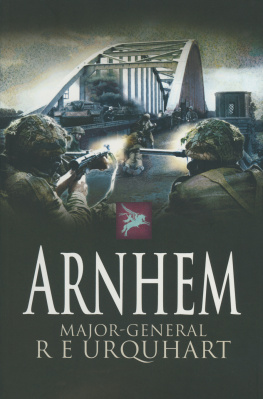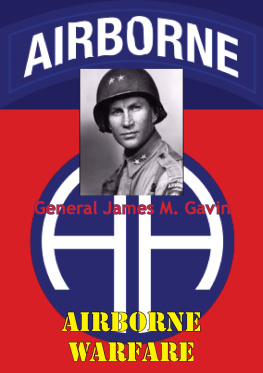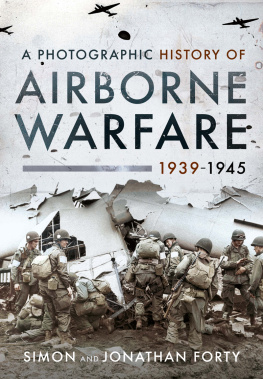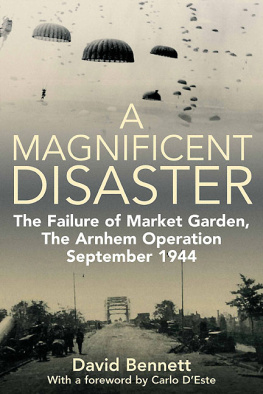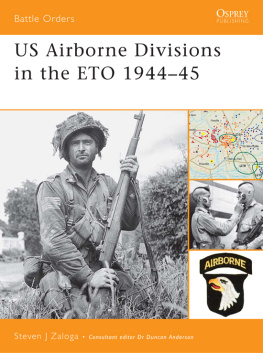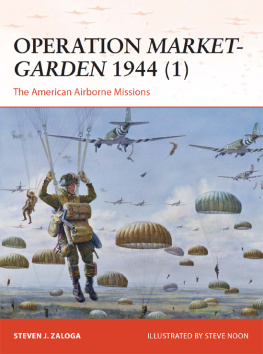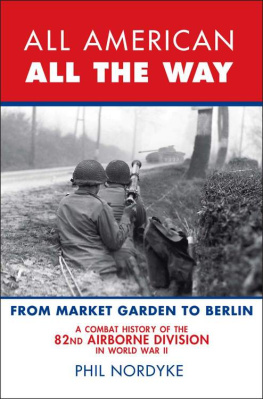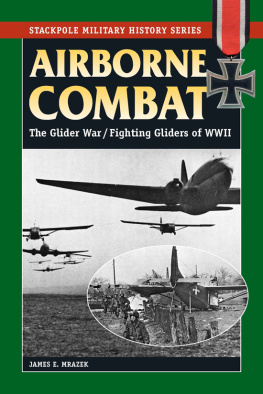For Alexander Campbell Cousin. Actor. Tart.
Introduction
The men who made up Americas parachute regiments in World War II were some of the best the US Army had to offer; privates in an airborne unit often had the intelligence and initiative that would make them candidates for NCO positions in the regular infantry, their sergeants had to be able to do their own job as well as those of their fellow NCOs and the junior officers that led them, and their officers of all grades had a reputation for hard work and leading from the front a fact reflected in their casualty figures.
From the outset US paratroop formations justifiably considered themselves an elite, though it would take a little time for their operational capabilities to be fully realized, not least because many in the regular Army were none too enamored of the idea of elite units in general, especially ones that were so costly to train, equip, and deploy. Nevertheless, the extremely high quality of the parachute infantry regiments allowed them to compensate for early operational mistakes, and once the lessons of those mistakes had been fully absorbed they provided the Army with a strategic capability that could threaten any part of the Axis front with envelopment from the air.

US paratroopers, likely from Lieutenant Colonel Benjamin Vandervoorts 2d Battalion, 505th Parachute Infantry Regiment (2/505th), stand guard over wounded German soldiers at the Waalbrug road bridge in the Netherlands during Operation Market Garden. Though the idea of using parachute troops to make dramatic incursions into enemy territory had been present in most of the major military powers throughout the 1930s, the US decision to develop an airborne capability was (like the British endeavors) essentially reactive. The exploits of German Fallschirmjger during the fall of France and the Low Countries in MayJune 1940 showed off their daring tactical utility, while the assault on Crete in May 1941 demonstrated the strategic potential of such forces when employed boldly and on a large scale. ( Hulton-Deutsch Collection/CORBIS/Corbis via Getty Images)
The Germans had made the running in airborne warfare in the first years of the war, but as the Wehrmacht gradually turned from offensive to defensive operations, it became clear that it would have to find some system for dealing with prospective enemy incursions from the sky. Airborne operations promised great things, but the very boldness of their execution could also be their greatest weakness. Generalfeldmarschall Albert Kesselring thought that

A German soldier relaxes after receiving first aid and a cigarette from a member of a medical unit of the 82d Airborne Division during the first week of the Normandy campaign. The performance of German units in Normandy and the Netherlands was impressive, with many fighting more tenaciously than their composition would suggest, often relying upon their small core of veterans to keep things functioning. The Germans understood that, rather than disband such battle-hardened forces, it was better to let them operate as reduced Kampfgruppen, leavened with drafts of replacements to keep the fighting strength up until the time came to withdraw them from the line for a proper rest and full refitting. (Photo12/UIG/Getty Images)
An air landing, more so than any operation on the ground, is a thrust into unknown territory. The conventional means of reconnaissance and sources of information offer inadequate results and require a great deal of time. From the moment the airborne troops land, they face surprises against which they are not protected by advance reconnaissance and security measures and from which they are no longer able to escape. Consequently, every airborne operation involves a greater risk than ordinary ground combat, requires more time for preparation, and entails a distinct moment of weakness during the first phase of landing. (PAM 20-232 1951: 4041)
The generally shambolic response to the US and British drops in Sicily proved that fending off paratroop and glider attacks was not something that should be left to the proclivities of the local commander; rather it required purpose-built defenses and an evolution in doctrine. Generalfeldmarschall Erwin Rommel, given the role of defending Normandy from any prospective Allied invasion, took the threat posed by air-landed forces very seriously, and developed a number of passive defensive measures designed to cause maximum disruption to the landings of air-dropped and gliderborne troops. In terms of the doctrine that defending units should employ when dealing with paratroopers, Rommel stressed an initial response that was immediate and overwhelming, destroying the attacker before he had a chance to establish himself properly. Such an approach married well with the German practice of forming ad hoc Kampfgruppen (combined-arms battlegroups) to deal with specific problems when in combat situations, but it did rely upon the quality of the troops available, their vehicles and firepower, and especially the skill of their commanders.
US airborne operations in Europe and the Mediterranean 194345
MAP KEY
The battle for Crete had reframed the idea of what an airborne action could achieve. The Allied airborne efforts grew larger and more daring, from commando-style raids up to battalion and then regimental jumps, the most important of which was that of the 505th Parachute Regimental Combat Team (505th PRCT) over Sicily in 1943. Despite the problems and in some cases outright disasters of that campaign (especially the damage done to the succeeding wave that suffered the loss of many planes shot down by their own side), the paratroopers made a decisive difference to the success of the amphibious landings, confusing the German and Italian defenders, and spoiling their attempts to interfere with the invasion beaches. Sicily proved the value of large airborne operations, as well as the capabilities of the men who had been entrusted with achieving their objectives. The European airborne operations in 194445 would all be large-scale strategic endeavors. Operation Overlord would be the largest assault to date, dropping three airborne divisions (the 82d, 101st, and British 6th) on Normandys Cotentin peninsula, followed two months later by the 517th Regimental Combat Team (517th RCT) jumping into southern France as part of Operation Dragoon.
The stalling of the Allied push through the Low Countries in late summer 1944 spurred Field Marshal Bernard Montgomery to develop the plan that would become Operation Market Garden. Montgomerys proposal was nothing if not bold, arguing for an airborne-led 64-mile incursion across enemy-held territory, with three airborne divisions the 101st, 82d, and British 1st securing all the key bridges on the way to the Rhine. If it worked, it would completely bypass all the German Armys prepared defenses, more or less liberating the Netherlands and putting the Allies on the Rhine in less than a week. The speed with which the whole undertaking was orchestrated seven days from proposal to the drop was breathtaking, and success would be tantalizingly close, but reconnaissance failures, planning mistakes, and bad luck led to the annihilation of the British 1st Airborne Division at Arnhem. The final airborne effort Operation Varsity, launched toward the end of March 1945 made good on Market Gardens failings. It was the largest airborne landing in history and would prove to be a complete success, comprehensively breaching the German defense of the Rhine.

